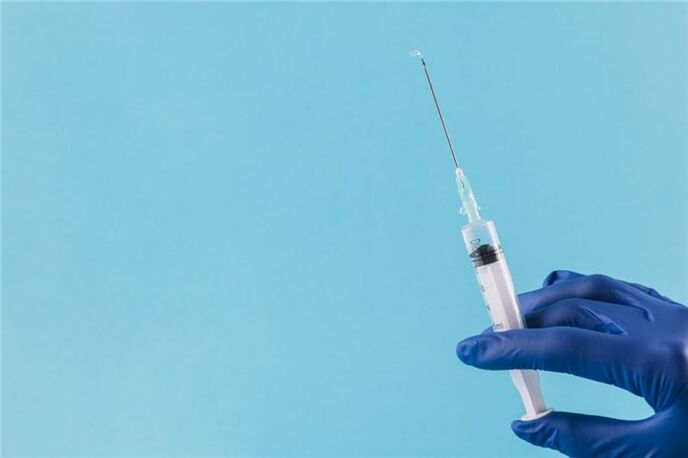The neck of the human body has a large number of nerve bundles and blood vessels that ensure the normal function of the brain and sensory organs. The most common cause is cervical osteochondrosis, a dangerous degenerative disease of cartilage and bone tissue with severe pain, decreased hearing, vision and cognitive function, facial numbness and a progressive loss of the ability to work.
If you are concerned about pain and stiffness in your hands when turning your head, frequent dizziness or weakness, it is time to consider treatment for cervical osteochondrosis.

Do not delay treatment for cervical osteochondrosis until later.
Causes of cervical osteochondrosis
Due to the anatomy, cervical osteochondrosis has its own characteristics. The vertebrae in the cervical region are smaller than the lumbar or even thoracic spine and also carry a constant static load (the weight of the head). During the day, load can be expressed by maintaining the same posture—for example, while reading a document, while working in front of a computer. The neck is also often deprived of rest at night due to unphysiological sleeping positions and uncomfortable pillows (the head either "hangs" on the pillow or is a reference point and is under pressure). Due to this pre-pathological state, the so-called. Muscle overtraining. Certain muscle groups are under undue stress and therefore require longer rest and recovery times -- but don't get them -- because the schedule hasn't been lifted.
All of this results in persistent tension in some muscle groups while dystrophic changes in others, and often results in a "turtle neck" (a person stooping while the head protrudes forward, creating a characteristic deflection of the neck)incline). In this case, the weight of the head rests on the first cervical atlas. He was forced to take on the portion of the load that the neck muscles could handle during normal physical development. But the truth is, he is simply not suitable for such a task!
Other factors that can accelerate the wear and tear of the intervertebral cartilage in the cervical spine are usually:
- Age-related and hormonal changes - most common after age 45 (inorganic matter over organic matter, which reduces bone flexibility and causes it to mineralize, and bone tissue breaks down faster than it grows);
- Injuries to the neck and other parts of the spine;
- Cardiovascular diseases;
- Congenital abnormalities and acquired postural disorders of the musculoskeletal system;
- Insufficient power (after all, the intervertebral joints in the neck are the most mobile, and various loads are necessary for their health);
- Smoking and other bad habits.
Staging of cervical osteochondrosis
The staging of cervical osteochondrosis is based on diagnostic criteria. These include the patient's own sensation, palpation, assessment of neck mobility, as well as spaces between vertebrae and other indicators on X-rays. Depending on the stage of the disease, the orthopaedic surgeon chooses the treatment, preventive measures and, if necessary, supportive orthoses for osteochondrosis of the neck.
1st degree cervical osteochondrosis
1st degree cervical osteochondrosis is also known as the preclinical stage. Often, patients ignore the first symptoms of cervical osteochondrosis and go untreated due to its mild severity. They are attributed to fatigue after the work day, uncomfortable sleeping positions, stress, migraines and various ailments. Patient feels:
- Stiff neck, especially in the morning or after holding the same position for a long time;
- pain when the head is turned violently;
- Frequent headaches (including weather changes).
Treatment for cervical osteochondrosis is most likely in women at this stage of the disease -- after all, they're more symptomatic. This is due to the peculiarities of work and physical activity (eg, working in an office during the day, bending over at the sink or doing homework with children at night), as well as hormonal and anatomical characteristics (reduced muscle mass and bone mineral density). In the preclinical stage, women are characterized by stress surges, numbness and paleness of the skin (especially on the face), syncope and dizziness, nausea, and other symptoms of cerebral hypoxia.
Most of the time, symptoms and treatment of cervical osteochondrosis are faced by patients between the ages of 45 and 65, but they can appear fairly early—from age 25—due to chronic fatigue, excessive physical activity, and other risk factors.
At this stage, the disease can be completely overcome with therapeutic exercise, ointments for cervical osteochondrosis, orthopaedic training, and nutritional normalization.
2nd degree cervical osteochondrosis
In stage 2 of the disease, the intervertebral cartilage begins to drop in height, acting as a shock-absorbing insert between the vertebrae. Because of this, microtrauma to the neck often occurs during sharp turns, jumps, or overloading. Disc herniation (protrusion) and radiculopathy (compression of nerve endings) may also occur.
These changes can cause severe pain in the head and neck. Decreased concentration, speed of thinking, and sensitivity of the face and hands. Patients complain of increased fatigue and irritability. At this stage, cervical osteochondrosis already requires effective medical treatment.
3rd degree cervical osteochondrosis
Severe and acute pain is permanent and can be given to the arms, upper back, and neck. One or both of the patient's arms quickly become fatigued. The process begins to move to adjacent joints due to a violation of the spine's natural compensatory function. Patients find it difficult or impossible to turn their heads due to the formation of bone growths - osteophytes and the fact that the cartilage is replaced by connective tissue. Every movement is accompanied by a gruff crunch, if possible. The neck is incapacitated and the muscles atrophy. Hernias often form, and cracks appear in the vertebrae. There is noise in the ear.
Treatment of cervical osteochondrosis
Treatment of cervical osteochondrosis is comprehensive, taking into account the patient's age, physique, occupation, level of physical fitness, lifestyle, and the presence of concomitant diseases. Therefore, the appropriateness of specific therapeutic measures in the treatment of cervical osteochondrosis in women and men should be determined by the attending physician.

In order to effectively treat osteochondrosis of the neck, the implementation of a comprehensive approach and a doctor's prescription is required.
Physical therapy for cervical osteochondrosis
To relieve pain, reduce inflammation, and improve nerve conduction and nutrition in the brain, use the following physical therapy treatments for cervical osteochondrosis:
- Ultrasound therapy and sonication therapy - have a warming effect and improve the effect of topical medicines;
- Electrophoresis - enhances the effect of administration, has a stimulating and warming effect;
- Shockwave Therapy (SWT) - activates blood circulation, relieves inflammation and improves regeneration of bone and cartilage tissue;
- Myoelectric stimulation - improves neck and arm mobility and stamina, relieves pain;
- Cold and ozone therapy - to reduce pain and inflammation, help reduce the dose of corticosteroid drugs;
- Physiotherapy and exercise therapy - strengthen neck muscles, improve blood circulation and metabolism, maintain neck mobility;
- Manual therapy and mechanical traction (traction) - to help get rid of clips and pain;
- Acupuncture - helps maintain mobility and nerve sensitivity;
- Paraffin application - stimulates metabolic processes and relieves pain.
Nursing home treatments for osteochondrosis of the cervical spine are effective and beneficial - for example, balneotherapy (hydrogen sulfide, radon and turpentine baths) leech therapy (leech therapy).
Massage Therapy for Neck Osteochondrosis
Therapeutic, lymphatic drainage massage and physiotherapy have a positive effect on the discs, bone tissue, muscles and ligaments in the cervical region. Some movements can be performed independently—for example, rubbing the neck collar, parotid area, and shoulders, washing the neck with fingers and the edges of the palms, slapping, stroking, and ascending movements along the back of the neck. Treatment for cervical osteochondrosis is not superfluous, a circular massage on the back of the head, as well as a warm massage on the collarbone area, shoulders and upper back. Massage is especially effective before a kinematic therapy practice. You can combine it with an ointment used to treat cervical osteochondrosis.
For neck osteochondrosis, hydromassage is also recommended - a physical therapy technique that improves metabolism, inhibits fiber growth, helps get rid of headaches and improves nerve conduction.
Exercise therapy for cervical osteochondrosis
Lack of adequate physical activity in the neck and back muscles is the main reason for the occurrence and further progression of cervical osteochondrosis. Therefore, daily gymnastics are used both for the prevention and treatment of this disease (but not for the worsening of cervical osteochondrosis! ). Remember to exercise at least 3-5 times a day (1 in the morning, after waking up). All movements should be smooth and free of cramps. If you experience pain during exercise, stop exercising, and if the entire complex is painful for you, contact an orthopedist for medical treatment of cervical osteochondrosis and visit a sports therapy coach.
You can do the following exercises daily (5-7 repetitions):
- Press your palms against your forehead and strain your neck, trying to move your palms with your forehead. Repeat the exercise for the back of the head, then the left and right temples in turn.
- Tilt your head back and slowly lower it, pressing your chin against your chest.
- Stand up straight and turn your head to the left as far as possible. Repeat the exercise on the right.
- Tilt your head back and try to touch your shoulders with your ears. Repeat on both sides.
- Lower the chin to the jugular incision, then turn the head to one side first (starting with 5 reps), then similarly to the other side.
A warm-up of the shoulders, such as "grinding", will not be superfluous. Daily exercise in the early stages of the disease can help avoid taking pills for cervical osteochondrosis.
PLEASE NOTE: If you've been diagnosed with osteochondrosis, you shouldn't describe a full circle with your head, because. It can be traumatic.
Diet for cervical osteochondrosis
Osteochondrosis of the cervical region can be classified as so-called. "A disease of the whole organism. " Thus, in the treatment of cervical osteochondrosis, dieting has two goals: to saturate the body with nutrients and limit the substances that cause joint dehydration, mineralization, and its destruction.
Therefore, when treating cervical osteochondrosis, it should occupy a special place in the diet:
- Poultry, lean beef, game, liver and offal. .
- Seafood - fish, shellfish, crustaceans, edible algae.
- Eggs and dairy products.
- Whole grains and legumes - oats, wheat (including sprouted), brown rice, beans, peas.
- Vegetables - carrots, spinach, bell peppers, broccoli, lettuce, etc.
- Fruits - apricots, bananas, citrus, plums, apples, avocados, peaches, pomegranates.
- nut.
- Any berries (fresh, dried, frozen) and dried fruit.
But marinades, pickles, fast food, semi-finished products and sausages should be completely excluded. Equally important is reducing the menu of white bread, potatoes, sweets (except dark chocolate and dried fruit), carbonated beverages and 'bag' coffee - which will reduce the need for medication for cervical osteochondrosis.
Osteochondrosis preparations
Conservative treatment of osteochondrosis includes a variety of treatments—from massage and diet to therapeutic exercise and physical therapy. All of these help improve the patient's condition and prevent complications. But the main approach has been and still is the use of drugs to treat osteochondrosis.

Preparations for osteochondrosis - the main method of fighting the disease.
medical goals
Treatment of osteochondrosis with medication is very effective in the early stages of the disease, and with the right treatment regimen, it can completely cure osteochondrosis or permanently eliminate its most unpleasant symptoms. At a later stage, medical control of the disease is possible.
Medications for osteochondrosis aim not only to affect the disease symptomatically, but also to systematically eliminate its causes. Therefore, treatment proceeds in the following directions:
- Anesthesia of the affected area;
- eliminate inflammation and relieve the acute phase of the disease;
- Restoration of microcirculation in affected tissues;
- Improve metabolic processes and protect cartilage from further damage (eg, free radicals);
- Regeneration of intervertebral disc cartilage tissue;
- Restore the mobility of the vertebral joints.
In cases where the disorder is accompanied by depression or emotional stress, treatment is also aimed at restoring a normal psychological state.
During remission, patients can take medication without medication or in prophylactic doses.
Drugs Effective in Treating Osteochondrosis: Release Form
For the treatment of osteochondrosis, topical and internal agents are used. The choice of drug delivery form depends on the patient's habits and lifestyle, the accompanying diagnosis and the stage of the disease.
Tablets and Capsules
Tablets and capsules for osteochondrosis are the most popular form of release. They are highly bioavailable and have systemic effects on the body.
Tablets should be taken directly with meals, usually 2 times a day.
The main disadvantage of tablets (especially NSAIDs) is that they act directly on the mucous membranes of the digestive system. Permanent use of these drugs is not recommended due to the risk of inflammation and stomach ulcers. They must be taken under medical supervision.

Medications for osteochondrosis should only be started after consulting your doctor.
Ointments, gels, creams and solutions for compression
Topical products are great for local anesthesia, inflammation, and swelling. They are considered safer for the body than tablets because they do not come into contact with mucous membranes and are absorbed into the bloodstream in small amounts. Topical formulations have no cumulative effect, are easy to use, and usually do not require a prescription. They can be used consecutively, not in a course. In the outward form of release, the patches are worth emphasizing—they simply attach to the affected area of the spine and can be worn under clothing all day.
Ointments, gels, and creams are the best medications for osteochondrosis in patients with contraindications to taking pills (containing steroid and non-steroidal anti-inflammatory ingredients) from the heart and endocrine system.
Injection Solutions
Drugs for intravenous and intramuscular administration have the greatest bioavailability and lowering effect on the mucosa of the gastrointestinal tract due to the direct entry of the active substance into the bloodstream.
Injectable medications for osteochondrosis can quickly stop the disease from getting worse, reduce pain, swelling, and restore sensitivity to nerve endings. For people with lactose intolerance, injections are an excellent alternative to oral medications. After all, most NSAIDs in tablets are lactose-containing drugs.
For particularly severe back pain, the drug works directly into the nerve as a blocker. The effects of this injection can last up to 3-4 weeks, but due to the blockade's proximity to the spine, the procedure should be performed by a qualified medical practitioner.

What is the medicine for osteochondrosis?
Drugs for osteochondrosis vary not only in the form of release. They are also divided into the following pharmacological groups.
Anti-inflammatory drugs for osteochondrosis
The role of NSAIDs in osteochondrosis is based on inhibiting the production of prostaglandins - a hormone-like substance that causes inflammation and pain in the affected area. Nonsteroidal drugs for osteochondrosis can quickly eliminate pain and heat in the skin, restore local metabolism, relieve swelling, discomfort and decreased sensitivity, and relieve pressure on spinal nerve roots.
NSAIDs used to treat osteochondrosis come in a variety of dosage forms—capsules and tablets, gels and creams, and solutions that are injected intramuscularly, intravenously, or subcutaneously. Treatment of NSAIDs with drugs for osteochondrosis often involves a combination of different forms. For example, tablets are used as the main therapy, while gels and ointments "remove" residual inflammation, requiring injections to relieve pain. These patches help reduce inflammation during all stages of treatment.
Steroid (hormonal) anti-inflammatory drugs are rarely used to treat osteochondrosis - mostly in the most advanced cases, when other treatments have not shown results.
chondroprotective agent
In osteochondrosis, the spring function of the intervertebral disc deteriorates, which is directly dependent on the volume of cartilage tissue and its elasticity. To maintain adequate cartilage thickness, the body must regenerate chondrocytes (chondrocytes) at a rate that roughly matches its destruction. But with dehydration, nutritional imbalances, stress, metabolic or anatomical disturbances, the rate of chondrocyte decay increases, new cells grow at a slower rate or the margin of safety falls short. To protect cartilage and restore its normal growth rate, it is worth taking special products based on glucosamine and chondroitin - chondroprotectants. Chondroprotective drugs that are effective in treating osteochondrosis stabilize the cartilage state, prevent its further destruction, and, with all medical recommendations, even help restore lost cartilage cells.
For sustainable results, chondroprotective agents (in the form of tablets, injections, or topical preparations) must be taken for life for 3-6 months.
warm up
Eliminates the discomfort of the so-called osteochondrosis. Warm medicine. they are:
- Dilates blood vessels in the skin and inhibits the transmission of pain impulses to the brain;
- Improve blood microcirculation in connective tissue;
- Disperse patient discomfort.
When using stimulant drugs, the peak effect occurs after half an hour, and the analgesic effect lasts for 2-4 hours. A localized increase in skin temperature is normal.
The list of medications for osteochondrosis includes ointments, creams, gels, and tinctures based on:
- camphor (camphor ointment);
- turpentine;
- benzyl nicotinate;
- Nonanediamine;
- capsaicin (capsicum tincture);
- Bee and snake venom.
Most of these drugs have combined ingredients - for example, bee venom and NSAIDs or snake venom, salicylic acid and turpentine. Therefore, you must ensure that you are not allergic to each component before using it.
Topical and general analgesics
Pain relievers for osteochondrosis are usually available in tablet and injection form. For common pain syndromes, common medications in the first aid kit can help.
In the later stages of osteochondrosis, prescription opioids - powerful drugs with many contraindications.
For complex anesthesia (eg, blockade), the so-called. A "cocktail" of simultaneously analgesic, decongestant, anti-inflammatory, local anesthetic and allergen-reducing effects.
important! Analgesics only relieve pain without affecting its cause. Therefore, without proper treatment, osteochondrosis can continue to progress, requiring a transition to increasingly severe pain medications.
vasodilator
Vasodilator medications, or vasodilators, used in osteochondrosis help restore normal blood supply to the tissues surrounding the affected intervertebral joints.
Blood vessels constrict due to pain and muscle tension. This deteriorates tissue nutrition, leading to hypoxia in the brain and accelerating disease progression. Therefore, for cervical osteochondrosis, drugs that normalize blood circulation are particularly important.
Vascular drugs for osteochondrosis improve peripheral blood circulation and cell metabolism and relieve pain.
Antispasmodics and muscle relaxants
To relieve cramps and tension, use antispasmodics and muscle relaxants. They normalize blood circulation, relieve pain and restore mobility.
To enhance the effects of muscle relaxants in osteochondrosis, they may be prescribed with clonazepam or diazepam (prescription drugs).
These drugs can be addictive, so use them with caution.
sedative
Symptoms of osteochondrosis and medication often contribute to chronic stress, emotional stress, depression, and other psycho-emotional disorders in patients.
For general sedation and to fight insomnia, you can use herbal preparations - eg, tincture of valerian, motherwort, peony.
For more severe illness, antidepressants are recommended.
Vitamin and Mineral Complex
Because osteochondrosis is considered a systemic disease, multivitamin and mineral therapy is important. Vitamins A, B, C, D, E groups, calcium and phosphorus preparations help to significantly improve the condition.
Vitamin AA natural antioxidant that stimulates collagen production and reduces the destruction of cartilage cells, promoting the renewal of joint tissue.
B vitaminsReduces hand pain, inflammation and numbness, and increases the sensitivity of nerve fibers.
Vitamin DResponsible for calcium absorption and helps restore bone tissue lost to osteochondrosis.
Vitamin ENecessary for normalization of blood circulation, protection from free radicals and cartilage regeneration.
prevention
If attention is paid to the prevention of cervical osteochondrosis, even if there are changes, its progress will be significantly slowed down. Doctor recommends:
- Live an active lifestyle and avoid lack of motivation;
- Minimize or eliminate heavy work;
- sleeping on orthopaedic mattresses and pillows;
- If you need to work in front of the computer for long periods of time, warm up regularly.
The ideal exercise for osteochondrosis is swimming. Water takes the load off the spine, and active movement helps build the muscle frame.

























